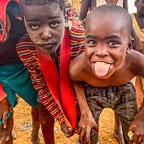Drought-proofing Somalia’s rangelands
Dams built by UNDP and the GEF provide water to camel herders and local communities when it’s needed most
Across Somalia, climate change is altering the seasons, worsening natural disasters and extreme weather events. In 2017, after the rains failed for three seasons in a row, a severe drought caused widespread hunger, disease and livestock deaths and left over 6 million people food insecure.
Puntland’s Shaxda village is especially prone to droughts. The village is mainly made up of camel herders and farmers, who are completely dependent on the rangelands and have struggled to access clean drinking water for their livestock and communities. “Lack of water was a challenge before… I have lost a lot of camels,” says herder Mohamed Hirsi.
In response, the United Nations Development Programme (UNDP) and Puntland’s Ministry of Environment, Agriculture and Climate Change, with funding from the Global Environment Facility (GEF), have constructed 10 new dams that provide camel herders, their livestock and the wider community with clean water.
The new earth dams have water troughs and elevated water tanks powered by solar power systems. These allow local communities to access clean water year-round and manage water shortages during dry seasons and droughts. Before the dams were built, communities relied on smaller wells and boreholes, which would often run dry.
The site of the dam in Shaxda was chosen specifically because of its central location so that animals and people from all the surrounding regions can benefit from it.
“Water is given to those who need it.” says Abdishakur Ise, Shaxda District Commissioner, “We serve the hospitals, all the schools and the poor people who live here.”
Across Somalia, UNDP’s water infrastructure projects provided water to over 53,000 households in 2019. We are also working with the government to improve policies and train officials so that this most precious of resources is better conserved in the years ahead.
UNDP’s Climate Resilience project has been made possible thanks to support from the Global Environmental Facility (GEF), which has also funded other projects in Somalia to help communities facing the effects of climate change, including solutions to protect land and livestock from the effects of soil erosion, and early warning systems for farmers facing flooding and drought risks.
See more photos here.
For more on our work with GEF to improve water management in Somalia see: https://www.thegef.org/news/somalia-and-undp-launch-new-10-million-project-climate-adaptation-and-water-access-rural
For our work on climate change in Somalia more generally see: https://undp-climate.exposure.co/somalias-ndc-climate-ambition
